20 start with L start with L
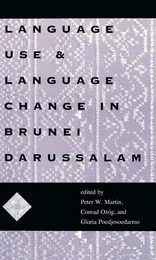
The oil-rich sultanate of Brunei Darussalam is located on the northern coast of Borneo between the two Malaysian states of Sarawak and Sabah. Though the country is small in size and in population, the variety of language use there provides a veritable laboratory for linguists in the fields of Austronesian linguistics, bilingual studies, and sociolinguistic studies, particularly those dealing with language shift.
This useful reference is divided into three sections: one on varieties of the Malay language used in the country, one on other indigenous languages, and one on the role and form of the English used there. Contributors to the collection include Bruneian scholars as well as established experts in the fields of Austronesian linguistics, sociolinguistics studies, and the description of new varieties of English.
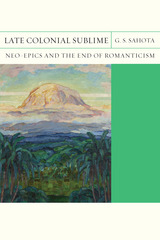
By bringing together distinct literary canons—both metropolitan and colonial, hegemonic and subaltern, Western and Eastern, all of which took shape upon the common realities of imperial capitalism—Late Colonial Sublime takes an original dialectical approach. It experiments with fragments, parallaxes, and constellational form to explore the aporias of modernity as well as the possible futures they may signal in our midst. A bold intervention into contemporary debates that synthesizes a wealth of sources, this book will interest readers and scholars in world literature, critical theory, postcolonial criticism, and South Asian studies.

The poetry of the Late Tang often looked backward, and many poets of the period distinguished themselves through the intensity of their retrospective gaze. Chinese poets had always looked backward to some degree, but for many Late Tang poets the echoes and the traces of the past had a singular aura.
In this work, Stephen Owen resumes telling the literary history of the Tang that he began in his works on the Early and High Tang. Focusing in particular on Du Mu, Li Shangyin, and Wen Tingyun, he analyzes the redirection of poetry that followed the deaths of the major poets of the High and Mid-Tang and the rejection of their poetic styles. The Late Tang, Owen argues, forces us to change our very notion of the history of poetry. Poets had always drawn on past poetry, but in the Late Tang, the poetic past was beginning to assume the form it would have for the next millennium; it was becoming a repertoire of available choices—styles, genres, the voices of past poets. It was this repertoire that would endure.

The Law Code of Viṣṇu (Vaiṣṇava-Dharmaśāstra) is one of the latest of the ancient Indian legal texts composed around the seventh century CE in Kashmir. Both because the Vaiṣṇava-Dharmaśāstra is the only Dharmaśāstra that can be geographically located and because it introduces some interesting and new elements into the discussion of Dharmaśāstric topics, this is a document of interest both to scholars of Indian legal literature and to cultural historians of India, especially of Kashmir. The new elements include the first Dharmaśāstric evidence for a wife burning herself at her husband’s cremation and the intrusion of devotional religion (bhakti) into Dharmaśāstras.
This volume contains a critical edition of the Sanskrit text based on fifteen manuscripts, an annotated English translation, and an introduction evaluating its textual history, its connections to previous Dharmaśāstras, its date and provenance, its structure and content, and the use made of it by later medieval writers.
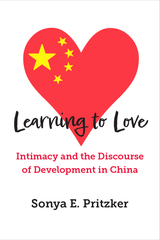
Learning to Love offers a range of perspectives on the embodied, relational, affective, and sociopolitical project of “learning to love” at the New Life Center for Holistic Growth, a popular “mind-body-spirit” bookstore and practice space in northeast China, in the early part of the 21st century. This intimate form of self-care exists alongside the fast-moving, growing capitalist society of contemporary China and has emerged as an understandable response to the pressures of Chinese industrialized life in the early 21st century. Opening with an investigation of the complex ways newcomers to the center suffered a sense of being “off,” both in and with the world at multiple scales, Learning to Love then examines how new horizons of possibility are opened as people interact with one another as well as with a range of aesthetic objects at New Life.
Author Sonya Pritzker draws upon the core concepts of scalar intimacy—a participatory, discursive process in which people position themselves in relation to others as well as dominant ideologies, concepts, and ideals—and scalar inquiry—the process through which speakers interrogate these forms, their relationship with them, and their participation in reproducing them. In demonstrating the collaborative interrogation of culture, history, and memory, she examines how these exercises in physical, mental, and spiritual self-care allow participants to grapple with past social harms and forms of injustice, how historical systems of power—including both patriarchal and governance structures—continue in the present, and how they might be transformed in the future. By examining the interactions and relational experiences from New Life, Learning to Love offers a range of novel theoretical interventions into political subjectivity, temporality, and intergenerational trauma/healing.
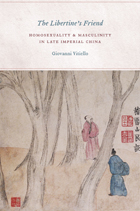
Delving into three hundred years of Chinese literature, from the mid-sixteenth century to the mid-nineteenth, The Libertine’s Friend uncovers the complex and fascinating history of male homosexual and homosocial relations in the late imperial era. Drawing particularly on overlooked works of pornographic fiction, Giovanni Vitiello offers a frank exploration of the importance of same-sex love and eroticism to the evolution of masculinity in China.
Vitiello’s story unfolds chronologically, beginning with the earliest sources on homoeroticism in pre-imperial China and concluding with a look at developments in the twentieth century. Along the way, he identifies a number of recurring characters—for example, the libertine scholar, the chivalric hero, and the lustful monk—and sheds light on a set of key issues, including the social and legal boundaries that regulated sex between men, the rise of male prostitution, and the aesthetics of male beauty. Drawing on this trove of material, Vitiello presents a historical outline of changing notions of male homosexuality in China, revealing the integral part that same-sex desire has played in its culture.
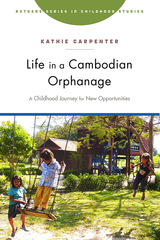

A thirteenth-century adaptation of one of ancient India’s most enduring stories, a cornerstone of the Kannada literary canon, translated for the first time into English.
The Life of Harishchandra, Raghavanka’s thirteenth-century masterpiece, is the first poetic rendering of one of ancient India’s most enduring legends. When his commitment to truth is tested by a powerful sage, King Harishchandra suffers utter deprivation—the loss of his wife and son, his citizens and power, and, dearest of all, his caste status—but refuses to yield. The tale has influenced poets and readers through the ages. Mahatma Gandhi traced his own commitment to truth to the impact of a Harishchandra play seen in childhood.
A poet from northern Karnataka trained in the twin traditions of Sanskrit and Kannada, Raghavanka negotiates a unique space for himself in the Kannada literary canon through important thematic, formal, and stylistic innovations. The conflicts he addresses—of hierarchical social order, political power, caste, and gender—are as relevant to contemporary India as to his own times.
Accompanied by the original text in the Kannada script, this spirited translation, the first into any language, brings an elegant and energetic narrative to a global readership.

The first English translation of the oldest extant work in Apabhramsha, a literary language from medieval India, recounting the story of the Ramayana.
The Life of Padma, or the Paümacariu, is a richly expressive Jain retelling in the Apabhramsha language of the famous Ramayana tale. It was written by the poet and scholar Svayambhudeva, who lived in south India around the beginning of the tenth century. Like the epic tradition on which it is based, The Life of Padma narrates Prince Rama’s exile, his search for his wife Sita after her abduction by King Ravana of Lanka, and the restoration of his kingship.
The second volume recounts Rama’s exile with Sita and his brother Lakshmana. The three visit various cities—rather than ashrams, as in most versions; celebrate Lakshmana’s marriages; and come upon a new city built in Rama’s honor. In Dandaka Forest, they encounter sages who are masters of Jain doctrine. Then, the discovery of Sita’s disappearance sets the stage for war with Ravana.
This is the first direct translation into English of the oldest extant Apabhramsha work, accompanied by a corrected text, in the Devanagari script, of Harivallabh C. Bhayani’s critical edition.

The first English translation of the oldest extant work in Apabhramsha, a literary language from medieval India, recounting the story of the Ramayana.
The Life of Padma, or the Paümacariu, is a richly expressive Jain retelling in the Apabhramsha language of the famous Ramayana tale. The work was written by the poet and scholar Svayambhudeva, who lived in south India around the beginning of the tenth century. Like the epic tradition on which it is based, The Life of Padma narrates Prince Rama’s exile, his search for his wife Sita after her abduction by King Ravana of Lanka, and the restoration of his kingship.
The first volume of The Life of Padma begins by recounting the histories and noteworthy ancestors of Rama’s allies and enemies, focusing on his antagonist, Ravana. Svayambhudeva connects central characters from the Ramayana tradition to one another and to Rishabha, the founding prophet of Jainism, in a complex web of family relations dating back generations.
This is the first direct translation into English of the oldest extant work in Apabhramsha, accompanied by a corrected reprint in the Devanagari script of Harivallabh C. Bhayani’s critical edition.

Women’s voices and their desires are in the spotlight in this celebrated ninth-century Prakrit romance, set in modern-day coastal Andhra Pradesh.
The Prakrit romance Lilavai, an early ninth-century poem attributed to Kouhala and set in modern-day coastal Andhra Pradesh, is the most celebrated work in the genre. Complexly narrated in the alternating voices of its heroines and heroes and featuring a cast of semi-divine and magical beings, it centers on three young women: Lilavai, princess of Sinhala (today’s Sri Lanka); her cousin Mahanumai, princess of the mythical city Alaka; and Kuvalaavali, Mahanumai’s adopted sister. Following a prophecy that Lilavai’s husband will rule the earth, the princess happens upon a portrait of King Hala of Pratishthana and immediately falls in love. While journeying to meet him, she hears her cousins’ tales of their lost loves, and then vows not to marry until they are reunited. To win Lilavai’s hand, King Hala journeys to the underworld, faces monsters, and overcomes armies.
Lilavai explores themes of karma and female desire, notably privileging women as storytellers. A new edition of the Prakrit text, presented in the Devanagari script, accompanies a new English prose translation.


With a backdrop of religious violence and escalating regional tensions in South Asia, Priya Kumar’s Limiting Secularism probes the urgent topic of secularism and tolerance in Indian culture and life. Kumar explores Partition as the founding trauma of the Indian nation-state and traces the consequences of its marking off of “Indian” from “Pakistani” and the positioning of Indian Muslims as strangers within the nation.
Kumar unpacks the implications of the Nehruvian doctrine of tolerance-with all of its resonances of condescension and inequality-and asks whether more ethical cohabitation can replace the “arrogant compulsive tolerance” of the state and the majority. Informed by Jacques Derrida’s recent work on hospitality and living together, Kumar argues for the emergence of an “ethics of coexistence” in Indian fiction and film. Considering narratives ranging from the cosmopolitan English novels of Rushdie and Ghosh to literature in South Asian languages as well as recent Hindi cinema, Kumar demonstrates that these fictions are important resources for reimagining tolerance and coexistence.
Distinctive and timely in its investigation of secularism and communalism, Limiting Secularism works to envision the radical possibilities of going beyond tolerance to living well together.
Priya Kumar is associate professor of English at the University of Iowa.
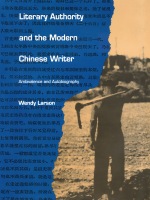
Larson focuses on the most famous writers associated with the May Fourth Movement, a group most active in the 1920s and 1930s, and their fundamental ambivalence about writing. She analyzes how their writing paradoxically characterized textual labor as passive, negative, and inferior to material labor and the more physical political work of social progress, and she describes the ways they used textual means to devalue literary labor.
The impact of China’s increasing contact with the West—particularly the ways in which Western notions of “individualism” and “democracy” influenced Chinese ideologies of self and work—is considered. Larson also studies the changes in China’s social structure, notably those linked to the abolition in 1905 of the educational exam system, which subsequently broke the link between the mastery of certain texts and the attainment of political power, further denigrating the cultural role of the writer.

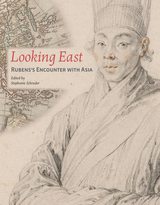
Peter Paul Rubens’s fascinating depiction of a man wearing Korean costume of around 1617, in the collection of the J. Paul Getty Museum, has been considered noteworthy since it was made. Published to accompany an exhibition of Rubens’s Man in Korean Costume at the J. Paul Getty Museum from March 5 to June 9, 2013, Looking East: Rubens’s Encounter with Asia explores the various facets of Rubens’s compelling drawing of this Asian man that appears in later Rubens works. This large drawing was copied in Rubens’s studio during his own time and circulated as a reproductive print in the eighteenth century. Despite the drawing’s renown, however, the reasons why it was made and whether it actually depicts a specific Asian person remain a mystery. The intriguing story that develops involves a shipwreck, an unusual hat, the earliest trade between Europe and Asia, the trafficking of Asian slaves, and the role of Jesuit missionaries in Asia.
The book’s editor, Stephanie Schrader, traces the interpretations and meanings ascribed to this drawing over the centuries. Could Rubens have actually encountered a particular Korean man who sailed to Europe, or did he instead draw a model wearing Asian clothing or simply hear about such a person? What did Europeans really know about Korea during that period, and what might the Jesuits have had to do with the production of this drawing? All of these questions are asked and explored by the book’s contributors, who look at the drawing from various points of view.
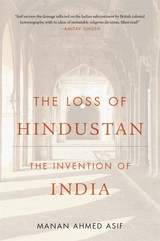
Shortlisted for the Cundill History Prize
“Remarkable and pathbreaking…A radical rethink of colonial historiography and a compelling argument for the reassessment of the historical traditions of Hindustan.”
—Mahmood Mamdani
“The brilliance of Asif’s book rests in the way he makes readers think about the name ‘Hindustan’…Asif’s focus is Indian history but it is, at the same time, a lens to look at questions far bigger.”
—Soni Wadhwa, Asian Review of Books
“Remarkable…Asif’s analysis and conclusions are powerful and poignant.”
—Rudrangshu Mukherjee, The Wire
“A tremendous contribution…This is not only a book that you must read, but also one that you must chew over and debate.”
—Audrey Truschke, Current History
Did India, Pakistan, and Bangladesh have a shared regional identity prior to the arrival of Europeans in the late fifteenth century? Manan Ahmed Asif tackles this contentious question by inviting us to reconsider the work and legacy of the influential historian Muhammad Qasim Firishta, a contemporary of the Mughal emperors Akbar and Jahangir. Inspired by his reading of Firishta and other historians, Asif seeks to rescue our understanding of the region from colonial narratives that emphasize difference and division.
Asif argues that a European understanding of India as Hindu has replaced an earlier, native understanding of India as Hindustan, a home for all faiths. Turning to the subcontinent’s medieval past, he uncovers a rich network of historians of Hindustan who imagined, studied, and shaped their kings, cities, and societies. The Loss of Hindustan reveals how multicultural Hindustan was deliberately eclipsed in favor of the religiously partitioned world of today. A magisterial work with far reaching implications, it offers a radical reinterpretation of how India came to its contemporary political identity.

The eleventh-century masterpiece The Tale of Genji casts a long shadow across the literary terrain of the Heian period (794-1185). It has dominated critical and popular reception of Heian literary production and become the definitive expression of the aesthetics, poetics, and politics of life in the Heian court.
But the brilliance of Genji has eclipsed the works of later Heian authors, who have since been displaced from the canon and relegated to critical obscurity.
Charo B. D'Etcheverry calls for a reevaluation of late Heian fiction by shedding new light upon this undervalued body of work. D'Etcheverry examines three representative texts—The Tale of Sagoromo, The Tale of the Hamamatsu Middle Counselor, and Nezame at Night—as legitimate heirs to the literary legacy of Genji and as valuable indexes to the literary tastes and readerly expectations that evolved over the Heian period.
Balancing careful analyses of plot, character, and motif with keen insights into the cultural and political milieu of the late Heian period, D'Etcheverry argues that we should read such works not as mere derivatives of a canonical text, but as dynamic fictional commentaries and variations upon the tropes and subplots that continue to resonate with readers of Genji.
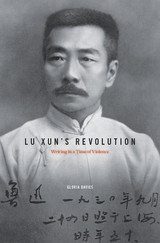
Widely recognized as modern China’s preeminent man of letters, Lu Xun (1881–1936) is revered as the voice of a nation’s conscience, a writer comparable to Shakespeare and Tolstoy in stature and influence. Gloria Davies’s portrait now gives readers a better sense of this influential author by situating the man Mao Zedong hailed as “the sage of modern China” in his turbulent time and place.
In Davies’s vivid rendering, we encounter a writer passionately engaged with the heady arguments and intrigues of a country on the eve of revolution. She traces political tensions in Lu Xun’s works which reflect the larger conflict in modern Chinese thought between egalitarian and authoritarian impulses. During the last phase of Lu Xun’s career, the so-called “years on the left,” we see how fiercely he defended a literature in which the people would speak for themselves, and we come to understand why Lu Xun continues to inspire the debates shaping China today.
Although Lu Xun was never a Communist, his legacy was fully enlisted to support the Party in the decades following his death. Far from the apologist of political violence portrayed by Maoist interpreters, however, Lu Xun emerges here as an energetic opponent of despotism, a humanist for whom empathy, not ideological zeal, was the key to achieving revolutionary ends. Limned with precision and insight, Lu Xun’s Revolution is a major contribution to the ongoing reappraisal of this foundational figure.

Creating paintings with poetic resonances, sometimes with ties to specific lines of poetry, is a practice that began in China in the eleventh century, the Northern Sung period. James Cahill vividly surveys its first great flowering among artists working in the Southern Sung capital of Hangchou, probably the largest and certainly the richest city on earth in this era. He shows us the revival of poetic painting by late Ming artists working in the prosperous city of Suchou. And we learn how artists in Edo-period Japan, notably the eighteenth-century Nanga masters and the painter and haiku poet Yosa Buson, transformed the style into a uniquely Japanese vehicle of expression.
In all cases, Cahill shows, poetic painting flourished in crowded urban environments; it accompanied an outpouring of poetry celebrating the pastoral, escape from the city, immersion in nature. An ideal of the return to a life close to nature—the “lyric journey”—underlies many of the finest, most moving paintings of China and Japan, and offers a key for understanding them.
READERS
Browse our collection.
PUBLISHERS
See BiblioVault's publisher services.
STUDENT SERVICES
Files for college accessibility offices.
UChicago Accessibility Resources
home | accessibility | search | about | contact us
BiblioVault ® 2001 - 2024
The University of Chicago Press









